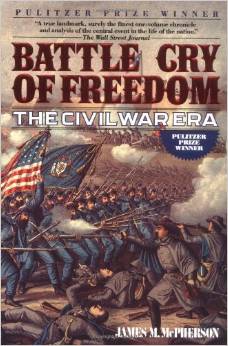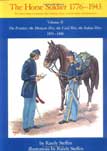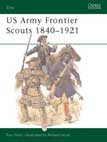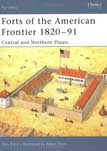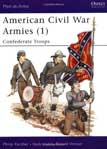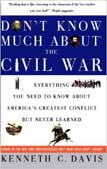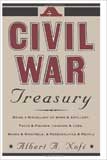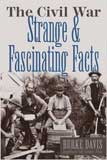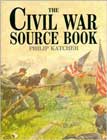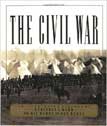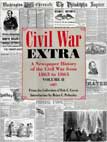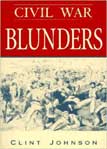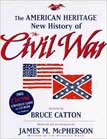

Published in 1988 to universal acclaim, this single-volume treatment of the Civil War quickly became recognized as the new standard in its field. James M. McPherson, who won the Pulitzer Prize for this book, impressively combines a brisk writing style with an admirable thoroughness. He covers the military aspects of the war in all of the necessary detail, and also provides a helpful framework describing the complex economic, political, and social forces behind the conflict. Perhaps more than any other book, this one belongs on the bookshelf of every Civil War buff.
This history of the Civil War brings to vivid life, the generals, the presidents, the soldiers, politicians, Abolitionists, Southern fire-eaters, Northern barn-burners, Copperheads, and Know-Nothings. An instant classic, this is the single volume on the tragic war and its background that every historian--amateur or trained--will want to have on the shelf to read again and again.
This is the second volume of a projected four-volume work. In Volume I the author delineated the uniforms, arms, accouterments, and equipment of the period from 1776 to 1850. In this volume he addresses himself to the eventful, bloody tragic mid-nineteenth century. Here he describes the dress and equipment of the horse soldier of the early frontier, the Mexican War, the Civil War, and the wars with the Indians. The uniforms, insignia, decorations, arms, and horse gear are described and profusely illustrated in three color plates and 126 black-and-white drawings. For his models the author used actual uniforms and equipment, supported by official government documents.
Among the subjects covered in this volume are the dress and equipment manufactured to meet the needs of cavalrymen at the early outposts east of the Missouri and in the brief War with Mexico that was a testing ground for the Civil War to come. (Ironically, much of the equipment and arms used by the United States Cavalry was designed by officers and government employees who later joined the Confederates.)
After the war came a new duty for the horse soldier—pacification of the hostile Indians of the West. As the needs of this harsh and demanding duty became clear, radical modifications were made to meet them. All these changes are described and minutely illustrated in this, the second volume of an indispensable reference work for American historians.
The role of the Frontier scout in the US Army during the period of westward expansion, was often far more important than that of the commanding officer. They possessed a priceless knowledge of the geography, people and characteristics of the great, unknown American hinterland and from the earliest days of exploration, the US Army depended on its scouts to guide troops across the plains and through the mountains as they guarded the nation's frontier settlements. This book tells the colourful story of these frontier men, covering many famous scouts such as 'Wild Bill' Hickok and 'Buffalo Bill' Cody.
A major period of westward expansion took place in the United States during the first half of the 19th century. Fur trading, the coast-to-coast railroad, the California gold rush and the removal of Native American tribes both facilitated and encouraged America's "manifest destiny" to become a transcontinental nation. The task of protecting the settlers from the tribes that inhabited the Great Plains fell to the US Army, and to do this an extensive network of permanent forts was created via construction and acquisition. This title examines why the forts were built, as well as their design, defensive features and the role they played in the settlement of the American West. The daily lives of the garrison soldiers and fort inhabitants are also covered, together with the fighting witnessed at key sites.
Why did Abraham Lincoln sneak into Washington for his inauguration? Was the Gettysburg Address written on the back of an envelope? Where did the Underground Railroad run?
Can you answer these questions? If not, you're not alone! New York Times-bestselling author Kenneth C. Davis comes to the rescue, deftly sorting out the players, the politics, the key events -- Emancipation and Reconstruction, Shiloh and Gettysburg, Generals Grant and Lee, Harriet Beecher Stowe -- and providing little-known facts that will enthrall even learned Civil War buffs. Vivid, informative, and hugely entertaining, Don't Know Much About® the Civil War is the only book you'll ever need on "the war that never ended."
This is a collection of stories and miscellany from a number of sources about various aspects of the Civil War. It attempts to cover facets of the Civil War that may have eluded more popular works. The book is organized in a loosely chronological way: Similar areas at each stage of the war are grouped together, with identical subtitles for each chapter in the group. The problem with this format is that the stories really do not tie together; some are just excerpts from larger works, and there are no transitions to link themes. Often, it is hard to understand exactly how a particular incident had any effect on the war. With so much material available on the Civil War, this is not recommended.
Wonderfully entertaining look at some intriguing oddities, unusual incidents, and colorful personalities connected with the Civil War. Includes 25 names the war was known by, personal quirks of Robert E. Lee and Stonewall Jackson, and more.
Katcher's entry in the field of Civil War publishing will intrigue the legions of Civil War buffs who yearly consume vast quantities of writing. Not a traditional campaign history, this title focuses on the experiences, equipment, uniforms, and tactics of army, navy, and state forces of both sides. Short biographies of major figures and an annotated "Sources" section are provided, and illustrations and quotations or excerpts from first-person accounts abound. The book is organized by broad topic, which could make its use in a reference collection problematic; librarians may prefer to place it in the circulating collection. Middle-aged eyes may have problems with the small type, and a number of minor typographical errors will give the true Civil War aficionado the thrill of discovery while not materially affecting the value of the title. Recommended for libraries collecting widely on the Civil War.
(Companion to the Ken Burns video) This magnificent pictorial history portrays the Civil War as never before, from the events leading to the firing of the first shot at Fort Sumter, through the battles at Shiloh and Gettysburg, the siege of Vicksburg, Sherman's march to the sea, and Lee's surrender at Appomattox. 500 photos. 1 map, suitable for framing.
A collection of articles from newspapers published during the Civil War. If you are into Civil War history, this is the ultimate source! Countless books have been written on the ironies and tradgedies of America's Civil War, but in these collections, the happenings of the day come alive.
Just reading the first newspaper, you will be transported back in time. Into the homes, Churches, courtrooms, schools and meeting houses you will become a part of history. No book written today can do justice to information straight from the source. Within these covers the event is not just a story but a true-to-life experience!
As fascinating to the war scholar as to the buff and the general reader ... an impressive store of facts, carefully assembled and carefully cross-indexed ... an indispensable handbook for Civil War reading and study.
by Clint Johnson -- There was little funny about a war in which 620,000 humans died. But it was finding humor amid devastation that kept Civil War soldiers marching toward the enemy. Union or Confederate, those in command proved adept at making mistakes. Many leaders were drunkards, couldn't speak English, didn't know a cannon's breech from its muzzle. Among the gallery of heroes were -- Colonel Edward Baker, who told his Federals to follow the plume of his hat if they wanted to find the war, and sent them over a cliff in a panicked retreat -- General Felix Zollicoffer, who wore a white raincoat so opposing Federals could see him, but not his eyeglasses so he could see them -- Lieutenant Commander Thomas Selfridge of the Union navy, who "found two torpedoes and removed them by placing his vessel over them" -- Colonel Alfred Rhett, a captured Southern blue blood whose fancy boots proved too small for every Union officer who coveted them - rum-drinking James Ledlie and dance-instructing Edward Ferrero, generals who kept each other company in a Union bombproof while their men faced slaughter from Fort Sumter to Appomattox, Civil War Blunders traces the war according to its amusing, often deadly miscues. Lurking behind every significant action, as readers will discover, was someone with a red face.
This 1878 volume is essentially a massive collection of eyewitness accounts of the Civil War. Besides battle scenes, this also includes draft riots in New York and prisoner-of-war recollections.
We trust American Heritage magazine to breathe life into our past and give new understanding to what out history means to us today. Heritage's picture history of the Civil War -- first published in 1960 and with more than a million copies in print -- has given a generation an intimate understanding of the nation's most momentous conflict.
Pulitzer Prize-winning author Bruce Catton's unsurpassed narrative, evoking the sweep and drama of a nation at war, provides the basis for The AMERICAN HERITAGE® History of the Civil War, which includes more than 800 important contemporary photographs and sketches and magnificent paintings. The Civil War's battles and campaigns are painstakingly illustrated in three-dimensional maps that guide the reader through the four years of the struggle. With illustrations that range from photographs by Matthew Brady and sketches by soldiers at the front, to famous paintings by Winslow Homer, the book boasts an extraordinary breadth of pictures and artifacts culled from across the nation.
This richly textured tapestry is made complete by the words of men and women who actually witnessed the events. From the journal entry of a Confederate soldier departing for battle and the letter an African-American soldier scrawled on the back of his wife's letter to him, to some of the best-known documents written in the very hand of Abraham Lincoln, each page of this book allows the participants to speak for themselves.
The Civil War, more than any other period of American history, shaped us as a nation. Any real understanding of where we have been and where we are going must be based on knowledge of this conflict. The AMERICAN HERITAGE® History of the Civil War re-creates those four crucial years in the nation's life, and it will endure as a masterpiece of history
Fascinating trivia and facts abound in this rich collection about America's most brutal and intriguing war. Questions are presented in categories that make it easy to test your knowledge. Also included are interesting sidebar articles, lists of little-known facts, anecdotes, and over 50 unusual black-and-white photographs. With a thorough index, 2,000 Questions and Answers About the Civil War provides a valuable resource for students, researchers, and Civil War buffs.
Pope Julius II excommunicates Italian state of Venice
Treaty of St. Truiden: anti-French Trapdoors / Bourgondisch covenant
Battle at Bicacca: Charles I and Pope Adrianus VI beat France
Mogol King Babur beats Sultan of Delhi
1st Spanish settlement in Philippines, Cebu City, forms
Peace of Beaulieu and Paix de Monsieur
King Charles I flees Oxford
Scottish general Montrose defeated
Netherlands and France sign military covenant
Frederik August I "the Strong" becomes Monarch of Saksen
Battle at Culloden Moor: Duke of Cumberland beats "James VIII & III"
US Marines attack shores of Tripoli
Americans under General Pike capture Toronto; Pike is killed
Fire destroys half of Charleston
Imakita Kosen, 1st Zen teacher of D.T. Suzuki, found the awakening
Establishment of Jewish congregations in Lower Austria prohibited
"Pomona" sinks in North Atlantic drowning all 400 aboard
Thomas J Jackson is assigned to command Harpers Ferry
President Abe Lincoln suspends writ of habeas corpus
West Virginia secedes from Virginia after Virginia secedes from US
Cornell University (Ithaca NY) is chartered
Heinrich Schliemann discovers Troi
White League, Paramilitary white supremacist organization, forms
Opera "Le Roi de Lahore" is produced (Paris)
President Hayes removes Federal troops from LA, Reconstruction ends
Pogroms against Russian Jews start in Elisabethgrad
1st Highlander (Yankee) shut-out, Philadelphia Athletics win 6-0
World Exposition opens in Luik
Sultan of Turkey Abdul Hamid II is overthrown
Belgian parliament rejects socialist motion for general voting rights
Relief laws replaces those of 1854, in the Netherlands
Pogrom leader Petljoera declares Ukraine Independence
Hadjememaar, [Corn de Gelder] elected in Amsterdam
Fritz Langs "Dr Mabuse, der Spieler" premieres in Berlin
Yakut ASSR formed in Russian SFSR
Mussolini government italian place in South Tirol / Alto Adige
Antwerp soccer tie Belgium-Netherlands 1-1
Karl Jansky reports reception of cosmic radio signal in Washington DC
Yanks pull a 1st inning triple-play and beat Philadelphia Athletics 9-8
1st US social security payment made
US Social Security system makes its 1st benefit payment
Himmler orders establishment of Auschwitz Concentration Camp
German troops occupy Athens Greece
Belgium Jews are forced to wear stars
Tornado destroys Pryor Oklahoma killing 100, injuring 300
Lou Jansen and Jan Dieters arrested, lead illegal CPN party in Holland
Soviet Union breaks contact with Polish government exiled in London
Boston Brave Jim Tobin no-hits Brooklyn Dodgers, 2-0
2nd Republic of Austria forms
Italian partisans capture Mussolini prisoner
US 5th army enters Genua
1st radar installation aboard a coml ship installed
Babe Ruth Day celebrated at Yankee Stadium and through out US
Arab legion attacks Gesher bridge on Jordan River
"Tickets, Please" opens at Coronet Theater NYC for 245 performances
South Africa passes Group Areas Act segregating races
Mohammed Mossadeq chosen Premier of Persia
"4 Saints in 3 Acts" closes at Broadway Theater NYC after 15 performances
1st general elections in British Guyana, won by Jagans PPP
Wrestler Freddie Blassie coins term "Pencil neck geek"
Heavyweight champ, Rocky Marciano, retires undefeated from boxing
"Today" show goes abroard 1st time (Paris France)
Liu Sjau-chi elected President of China PR
1st atomic powered electric-drive submarine launched (Tullibee)
South Korean President Syngman Rhee resigns
Togo (formerly French Togo) declares independence from French adm
NASA launches Explorer 11 into Earth orbit to study gamma rays
NFL officially recognizes Hall of Fame in Canton, Ohio
Sierra Leone declares independence from the UK
"Jopie" Pengel forms government in Suriname
Cuban Premier Fidel Castro arrives in Moscow
RC Duncan patents "Pampers" disposable diaper
Dmitri Shostakovitch completes his 2nd cello concert
Rocky Marciano retires as undefeated boxing champ
"Education of Hyman Kaplan" closes at Alvin NYC after 28 performances
Baltimore Oriole Tom Phoebus no-hits Boston, 6-0
Congress of Political Party Radicals (PPR) forms in the Netherlands
Carol Mann wins LPGA Raleigh Ladies Golf Invitational
Curt Flood resigns Senators after 13 games and departs for Denmark
Apollo 16 returns to Earth
New York City Mayor John Lindsey appeals that John Lennon not be deported
Kansas City Royal Steve Busby no-hits Detroit Tigers, 3-0
Pan Am 707 crashes into mountains of Bali, killing 107
Sandra Haynie wins LPGA Charity Golf Classic
"So Long 174th St" opens at Harkness Theater NYC for 16 performances
Arabic Monetary Fund established in Abu Dhabi
Bloody riots in Soweto South Africa
HCC, Hobby Computer Club, forms in the Netherlands
Accident at nuclear reactor Willow Island, W Virginia, kills 51
George Harrison releases "Love Comes to Everyone"
Barbara Barrow wins LPGA Birmingham Golf Classic
1st female soccer official is hired by NASL
Beatle Ringo Starr marries actress Barbara Bach [Goldbach]
Nordiques 1-Isles 4 - Semifinals - Isles hold 1-0 lead
Trial of John W Hinckley Jr attempted assassin of Reagan, begins
Nolan Ryan becomes strikeout King (3,509), passing Walter Johnson
Cleveland Indians beat Detroit Tigers, 8-4, in 19 innings
Over 70 inches of snow falls on Red Lake, Montana
"Sweet Charity" opens at Minskoff Theater NYC for 368 performances
Captain Midnight (John R MacDougall) interrupts HBO
Pat Bradley wins LPGA S&H Golf Classic
US Justice Department bars Austrian Chancellor Kurt Waldheim from entering US, due to his aid of Nazi Germany during WWII
"Starmites" opens at Criter Ctr SR Theater NYC for 60 performances
Beijing students take over Tiananmen Square in China
Hurricane in Bangladesh, kills 500
Mandatory seatbelt law goes into effect in Italy
50th annual barbershop quartet singing convention held (Mich)
Dodger Orel Hershiser undergoes career-threatening shoulder surgery
Firestone World Bowling Tournament of Champions won by David Ozio
"Small Family Business" opens at Music Box Theater NYC for 48 performances
New York Jets finish perfect 5-0 pre-season for 1st time
New York Mets trade David Cone to Toronto Blue Jays for Jeff Kent
Afghan Antonov AN-32 crashes at Tashqurgan, kills 76
"Inspector Calls" opens at Royale Theater NYC for 454 performances
7th longest NHL game: New Jersey Devils beat Buffalo Sabres (125 min 43 seconds)
Graeme Obree bicycles world record time (52,713 km)
President Nixon buried in Nixon Library in California
Twins righty Scott Erickson no-hits Brewers 6-0
"Indiscretions" opens at Ethel Barrymore Theater NYC for 221 performances
Coors Field in Colo opens - Denver Rockies beats Mets 11-9 in 14
"Little Foxes, " opens at Vivian Beaumont NYC for 56 performances
"Stanley, " closes at Circle in the Square Theater, New York City
Frank Nobilo wins Greater Greensboro Chrysler Classic at Forest Oaks
Las Vegas Senior Golf Classic by TruGreen-ChemLawn
Nancy Lopez wins LPGA Chick-fil-A Charity Championship
